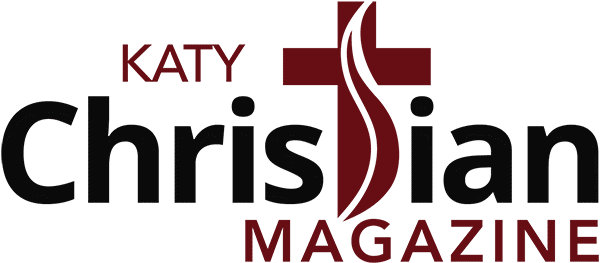The Bible Seminary, an accredited, Katy-based institution of higher learning, draws students from the greater Houston area and around the world. Part of TBS’s appeal is the opportunity for students to study Scripture alongside archaeological remains from the Land of the Bible. In addition to serving as provost at TBS and Director of Excavations at Shiloh, I am also the director of the Joshua, Judges, and Jesus (3J) museum. Jordan McClinton is the co-director.
Since the museum’s opening in March 2022 on the campus of The Bible Seminary, located adjacent to Grace Fellowship on Mason Road, thousands of guests have experienced the Bible come to life. Twenty TBS students and faculty members recently excavated with me for five weeks at Shiloh, one of Israel’s most important sites. Before the excavation, the Katy Christian Chamber of Commerce asked if I would consider creating a mobile exhibit for the first annual Katy Community Expo at the Merrill Center on August 26–27.
I enthusiastically accepted the invitation to showcase the artifacts my team has excavated over the past 25 years. In fact, we are bringing almost the entire museum. Here is a preview of what you can expect to see when you visit 3J at the Merrell Center.

Artifacts from the time of Joshua
Your tour will begin at Khirbet el-Maqatir, the likely site of biblical Ai (Joshua 7–8) where I previously directed the excavations. The socket stones from the Gate of Ai will greet you, and you will learn about fortifications in the Late Bronze Age. Then, you will see three Egyptian scarabs (iconographic amulets) found at Ai and other Conquest sites. Adjacent to the scarabs, are several ceramic vessels from Joshua’s time (ca. 1400 B.C.).
Like the Israelites, you will move next to Mt. Ebal (Joshua 8) where my team recovered a lead curse tablet or “defixio” in December 2019, one of the most important finds in the history of Biblical Archaeology. The proto-alphabetic script on the defixio is the oldest Hebrew writing ever found in Israel. Amazingly, the text includes the covenant name of Israel’s God. Finally, you will visit the northern city-state of Hazor (Joshua 11), the largest and most powerful urban center in Canaan. We have recreated its famous cultic shrine where you will learn about polytheism vs. monotheism.

Artifacts from the time of the Judges
Shiloh, the site of my current excavation in Israel’s Central Highlands, bridges the gap between the Conquest and Judges periods. Joshua erected the tabernacle there and oversaw the final distribution of tribal land allotments (Joshua 18). Throughout most of the Judges period, Shiloh was the center of Israelite worship. You will see pottery and objects from the tabernacle period (ca. 1399–1075 B.C.) at Shiloh, the home of Eli and Samuel.
You will also experience life in a typical Israelite village before Saul inaugurated the United Kingdom of Israel around 1040 B.C. Artifacts in this section range from a very large storage jar to a very small carnelian bead. You will also learn about lamps, beer, and war. You will even encounter bones and pottery from the sacrificial system.

Artifacts from the time of Jesus
After learning about some of the big changes that occurred between the Old and New Testaments, you will encounter dozens of artifacts from the world of Jesus. The first group of artifacts illustrate the Greco-Roman reality into which Jesus was born. These include statues of Zeus, Hera, Athena, Dionysus, and others who dominated the religious landscape after Alexander the Great’s conquest of the Mediterranean World in 332 B.C.
Alexander’s bust will be on display along with a fragment of a Greek manuscript. A lot of mythology underlies the biblical stories. For example, in Acts 14:8–13 the residents of Lystra mistook Paul and Barnabas for Hermes and Zeus. In contrast to polytheistic paganism, several big changes related to ritual purity emerged within late Second Temple period Judaism (ca. 63 B.C. to A.D. 70). These include daily ritual immersion in water, use of stone vessels, secondary burial, and the anachronistic use of coins. Examples of all of these will be on display. We will juxtapose the simple coin of Alexander Jannaeus, commonly referred to as a widow’s mite, with the ornate coins of the Roman rulers.

Finally, you will encounter a series of crucifixion artifacts and the Nazareth Text, an inscription related to resurrection. Apparently, there was a problem with bodies disappearing from graves in the Jerusalem area during the reign of Tiberius (ca. A.D. 33).
Many of our 150 artifacts on display serve as the basis for faith lessons, so make sure to ask a museum docent about these. The expo and exhibit are free to the public from 10:00 A.M. to 6:00 P.M. on Saturday, August 26th and 11:00 A.M. to 4:00 P.M. on Sunday, August 27th in the main lobby (to the right) of the Merrell Center. I look forward to talking with you about the Bible and the Land of the Bible. For more information about The Bible Seminary and the 3J Museum, visit www.thebibleseminary.edu.



